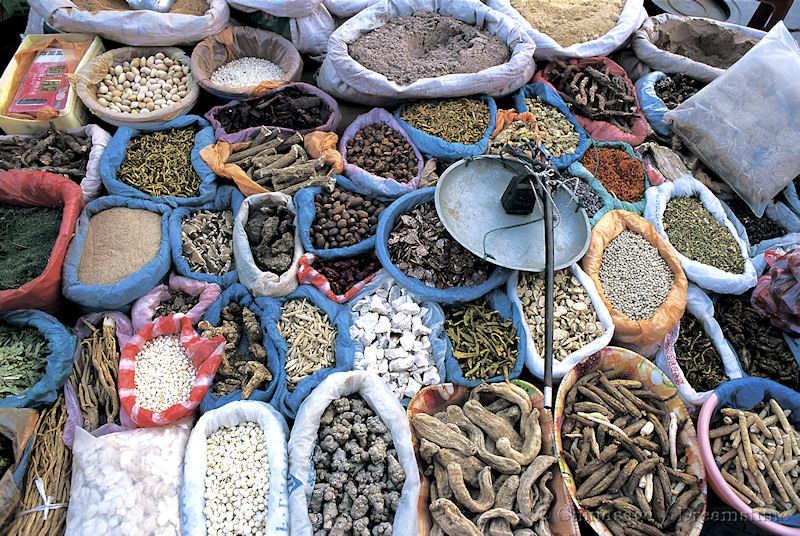Chinese Weights and Measures
China has had its own system of standard weights and measures for thousands of years. For measures of distance up until the Early Zhou dynasty a complex mix was used rather like the British imperial mishmash of inch, foot, yard, rod and chain. Famously the widely varying units of measurements used over China was standardized and decimalized under Emperor Qin Shihuangdi. Each unit of length was ten times bigger than the previous one with only a couple of exceptions. Even time was divided in 10s so a day consisted of 100 刻 kès. The Emperor insisted that his imperial lucky number ’six’ was included in the system; so that the standard double pace bu unit of length had to be six chi.
The non decimal units had 6 chǐ 尺 = 1 bù 步 (Shang to Han dynasties) 5 chǐ = 1 (Han to Qing dynasties) with 300bu = 1 lí 厘 360 bù= 1 lí 厘 (Tang to Qing dynasties). Another unit of length of historical importance is the 'bolt' used for measuring cloth, in Chinese this is 匹 (old form 疋) pǐ : bolt = 4 丈 zhàng (between 15 and 25 yards). A bolt of silk was a standard unit of currency for many centuries.
Measuring Distance in China

The decimal progression of units of distance is:
| 1 háo 毫 | (0.0000001 li) A tiny measure about a third of the diameter of a human hair | |
| 1 lí 厘 | = 10 háo 毫 | (0.000001 li) |
| 1 fēn 分 | = 10 lí 厘 | (0.00001 li) |
| 1 cùn 寸 | = 10 fēn 分 | (0.0001 li) The cun is sometimes called the Chinese inch |
| 1 chǐ 尺 | = 10 cùn 寸 | (0.001 li) The chi is sometimes called the Chinese foot at 1.0936 feet |
| 1 zhàng 丈 | = 10 chǐ 尺 | (0.01 li) |
| 1 yǐn 引 | = 10 zhàng 丈 | (0.1 li) |
| 1 lǐ 里 | = 10 yǐn 引 | There are exactly 2 li to the kilometer, a mile is about 3li. |
The ‘li’ is the measure used for long distances; at one time it was defined relative to the length of earth's circumference. Therefore in the Tang dynasty detailed observations were made to measure the earth's circumference very accurately. Over the long period of Chinese history different regions developed various local standards for weights and measures; so, for example, a li in Guangzhou was not the same as that in Tianjin.
When the Republic of China was founded in 1912 the progressive government decided to end confusion by aligning the traditional system of weights and measures to the international S.I. system ➚ of units (meters, kilograms, liters and hectares). They did this by choosing the closest whole number of units in the S.I. system ➚. The new standards were rigorously enforced over China so that local variations were removed. The conversion factors introduced were as follows:
| Distance | 2 li | = 1 kilometer |
| Area | 15 mu | = 1 hectare |
| Volume | 1 sheng | = 1 liter |
| Weight | 2 jin | = 1 kilogram |
Official publications use the S.I. units directly while at a local level, for example markets, the traditional units are still used. To avoid confusion the unit is prefixed with 市 shì (‘market’) to indicate traditional, or 公 gōng (‘public’) to indicate metric so 公里 gong li is a length of 1 kilometer while 市里 shi li is the traditional li of about 500 meters.
Some S.I. units have been given Chinese names such as 米 mǐ for meter (the character also means rice) and 克 kè for gram.
Proverbial distance
Measuring area in China

| 1 háo 毫 | (0.001 mu) Is 0.6666 square meters or about 7 square feet | |
| 1 lí 厘 | = 10 háo 毫 | (0.01 mu) |
| 1 fēn 分 | = 10 lí 厘 | (0.1 mu) |
| 1 mǔ 亩 | = 10 fēn 分 | The mu is the standard unit for land area. It was originally a strip 240 bù long by one bù in width. 15mu = 1 hectare; 6mu just over 1 acre. A hectare is defined as 100x100m whereas an acre is defined as 220 yards by 22 yards (or 1 furlong ➚ by 1 chain). |
| 1 qǐng 顷 | = 100 亩 mǔ | (100 mu). A qing was considered the area of land that can support a farmer and his immediate family. |

Measuring weight in China

| 1 qián 钱 | = 10 fēn 分 | (0.01 jin) |
| 1 liǎng 两 | = 10 qián 钱 | (0.1 jin) A liang was the Chinese name for a ‘tael ➚’, the Malay word tael was often used by foreigners for weights of silver. Also known as the ‘Chinese ounce’. Originally 1 jin weighed 16 liang. |
| 1 jīn 斤 | = 10 liǎng 两 | The jin is now defined as exactly 500g. Also known as ‘catty ➚’ or ‘Chinese pound’ = 1.1023lb. It used to be equivalent to 16 liang, so care needs to be taken when converting old measures. |
| 1 dàn 担 | = 100 jīn 斤 | (100 jin) Also known as the ‘picul ➚’ or Chinese hundredweight (another Malay word). It was the weight a man could carry on a shoulder pole. A picul was also the unit for collecting taxes and paying official salaries when officials were paid in rice. At that time it was equivalent to 120 catties not 100; it was also known as a ‘Chinese stone’ 石. |
Also: 1 liǎng 两 = 24 铢 zhū The zhu was used for weights of coins.
Measuring volume in China

| 1 gě 合 | = 10 sháo 勺 | (0.1 sheng) |
| 1 shēng 升 | = 10 gě 合 | Changed to be same as 1 liter or 0.22 gallons |
| 1 dǒu 斗 | = 10 shēng 升 | (10 sheng) |
| 1 dàn 石 | = 10 dǒu 斗 | (100 sheng) |
Also: 1 hú 斛= 5 dǒu 斗